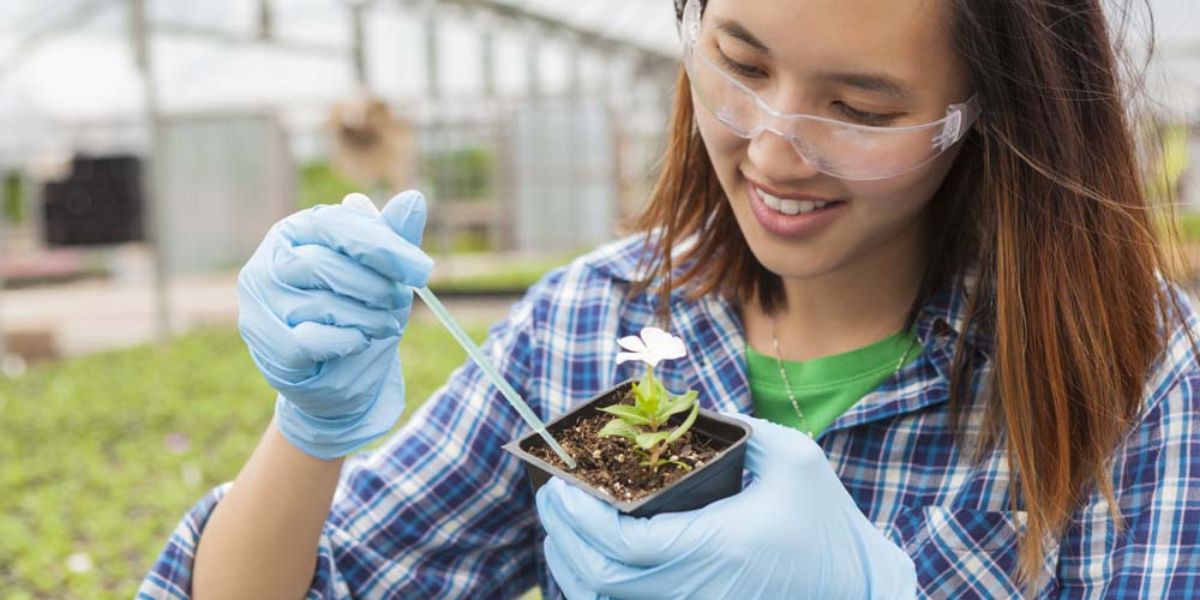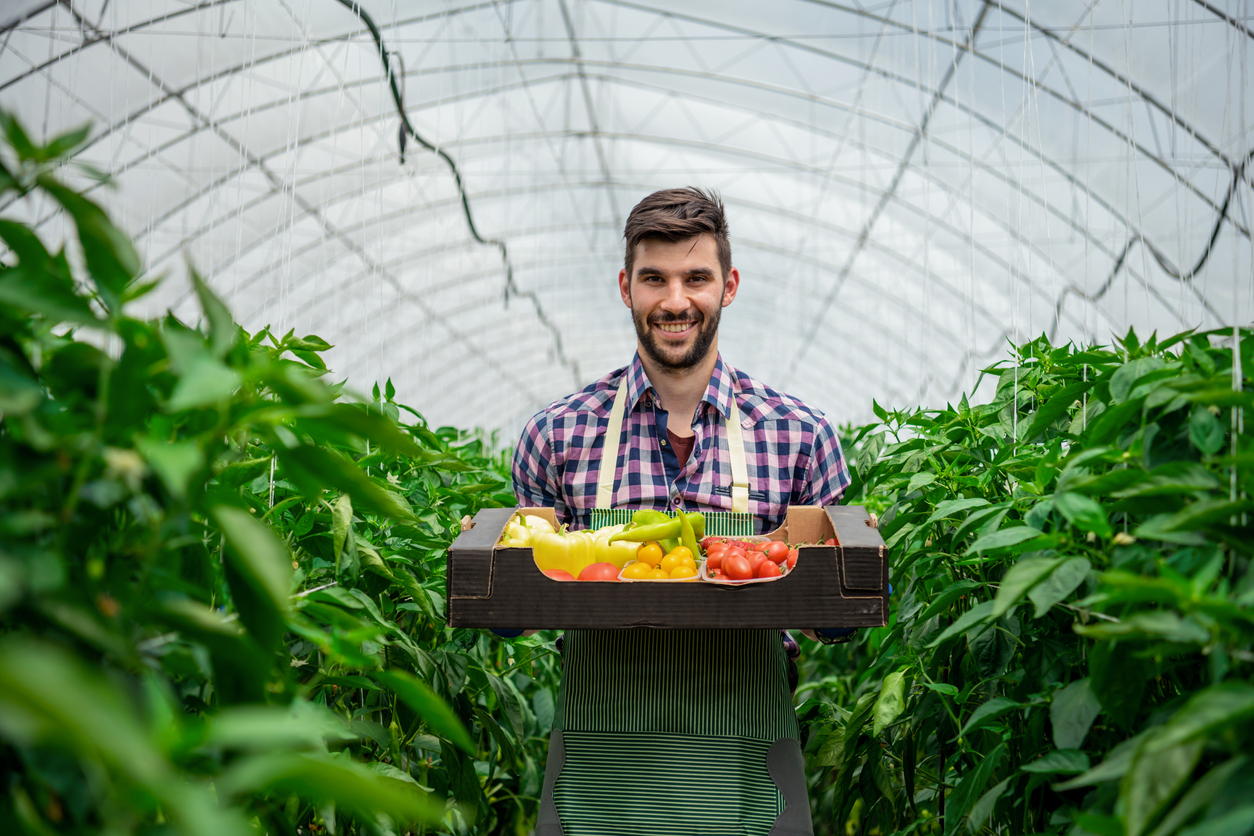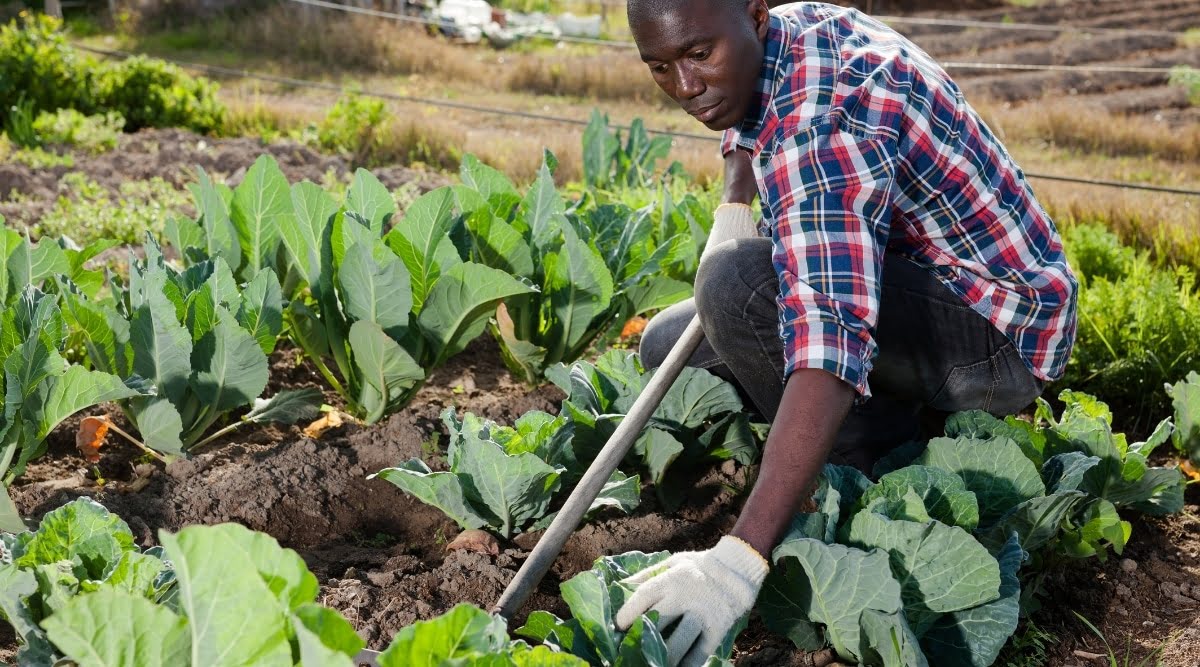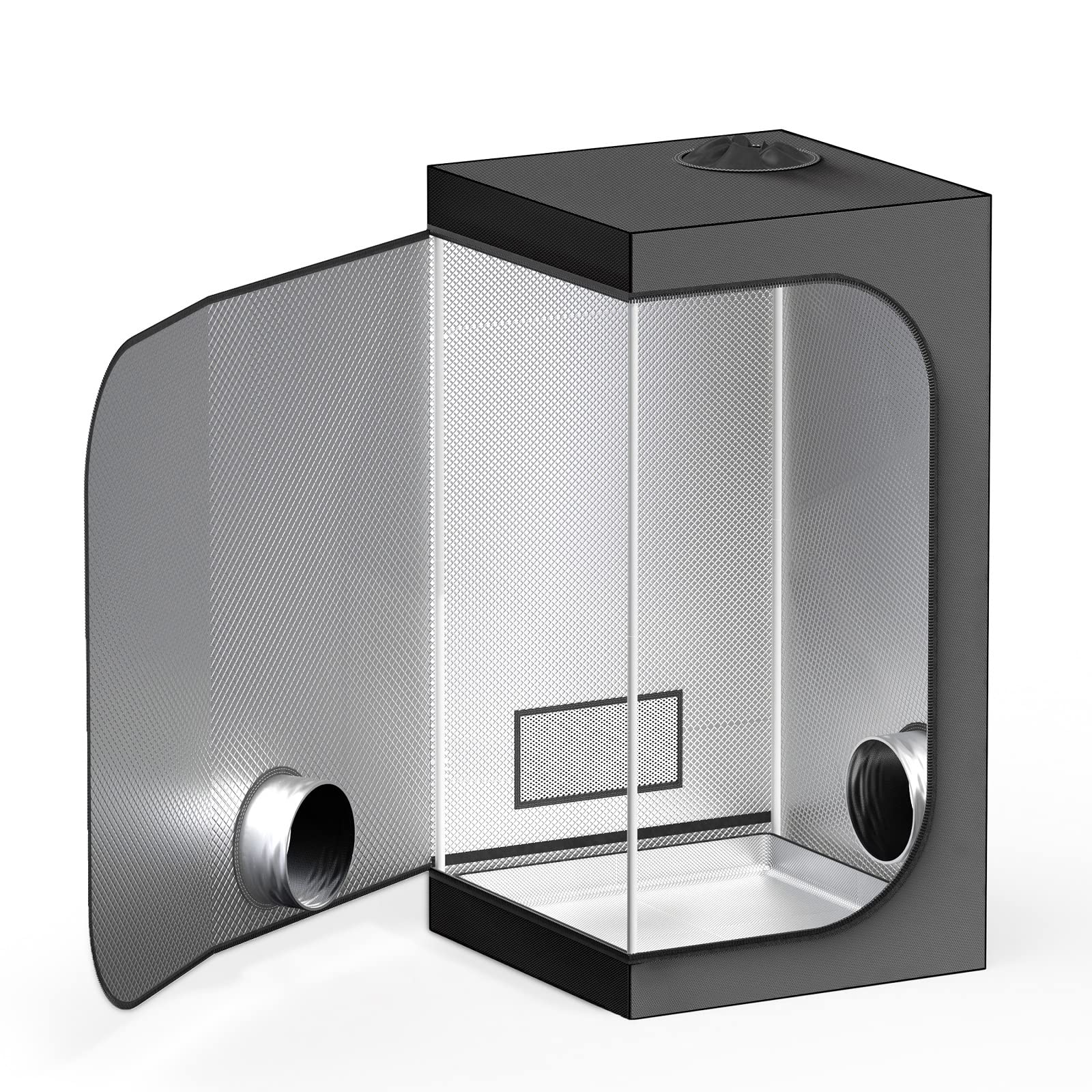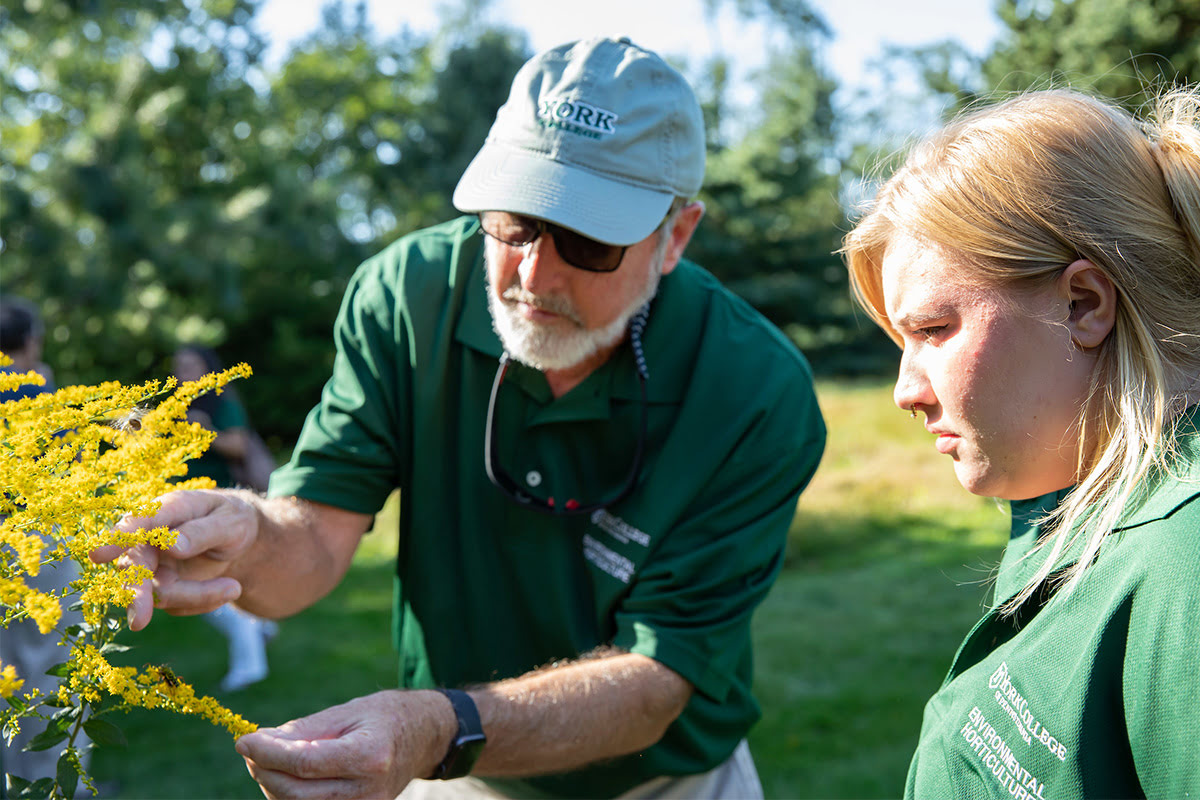Home>Gardening News and Trends>Gardening Trends>What Is Stratification In Horticulture
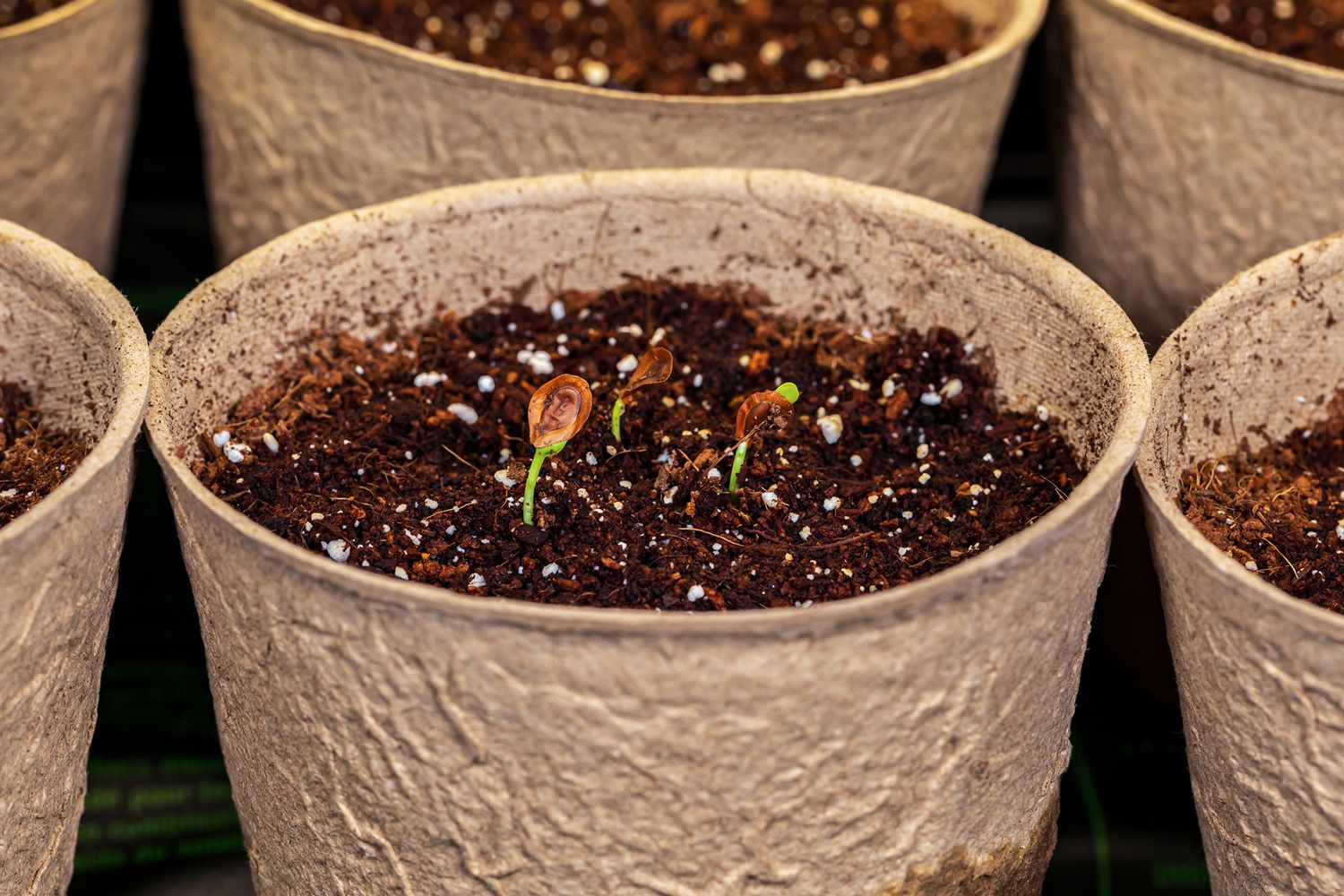

Gardening Trends
What Is Stratification In Horticulture
Modified: January 22, 2024
Discover the concept of stratification in horticulture and its importance in gardening trends. Learn how to use this technique for successful plant propagation and growth.
(Many of the links in this article redirect to a specific reviewed product. Your purchase of these products through affiliate links helps to generate commission for Chicagolandgardening.com, at no extra cost. Learn more)
Table of Contents
- Introduction
- Definition of Stratification in Horticulture
- Purpose and Benefits of Stratification
- Factors Affecting Successful Stratification
- Methods of Stratification
- Types of Seeds that Require Stratification
- Recommended Stratification Techniques for Different Plant Species
- Common Mistakes to Avoid in Horticultural Stratification
- Importance of Proper Timing in Stratification
- Conclusion
Introduction
Welcome to the world of gardening! Whether you’re a seasoned green thumb or just starting your gardening journey, understanding the latest trends and techniques can help you create a thriving and beautiful garden. One such technique that has gained popularity in recent years is stratification in horticulture.
Stratification is a process that mimics the conditions seeds would experience in their natural environment, encouraging them to break dormancy and germinate successfully. It involves subjecting seeds to specific temperature and moisture conditions in order to initiate the necessary physiological changes for growth.
In the following sections, we will delve deeper into the concept of stratification, exploring its definition, purpose, benefits, and the various methods used in this horticultural practice. We will also discuss the importance of proper timing and the types of seeds that require stratification.
By understanding and implementing stratification techniques, you can enhance the germination rate and overall success of your gardening endeavors. So, let’s jump in and explore the exciting world of stratification in horticulture!
Definition of Stratification in Horticulture
Stratification in horticulture refers to a process of treating seeds prior to planting in order to break their dormancy and promote successful germination. It involves subjecting seeds to specific temperature and moisture conditions that replicate the natural environment the seeds would experience in their native habitat.
Many plant species have developed dormancy mechanisms that prevent their seeds from germinating immediately after they are dispersed. This dormancy is nature’s way of ensuring that the seeds have the optimal conditions for germination and survival.
During stratification, the seeds are exposed to a period of chilling or moist conditions, or sometimes both, depending on the plant species. These conditions stimulate the seed’s dormancy-breaking mechanisms, allowing it to overcome barriers that prevent germination.
By replicating the natural conditions required to break seed dormancy, stratification prepares the seeds for successful and synchronized germination when planted. This technique is particularly useful for seeds that have hard seed coats, which act as a physical barrier to water absorption and oxygen intake.
It is important to note that not all seeds require stratification. Some seeds, known as “non-dormant” seeds, can germinate immediately after they are sown. However, many plant species, especially those adapted to cold climates, rely on stratification to ensure successful germination and growth.
Now that we have a clear understanding of what stratification is in horticulture, let’s explore the purpose and benefits it offers for gardening enthusiasts.
Purpose and Benefits of Stratification
The primary purpose of stratification in horticulture is to break seed dormancy and encourage successful germination. By subjecting seeds to specific temperature and moisture conditions, stratification mimics the natural environment they would experience in their native habitat, creating favorable conditions for germination.
There are several key benefits to practicing stratification in your gardening endeavors:
1. Promoting uniform and synchronized germination: Stratification helps synchronize germination, ensuring that seeds within the same batch germinate around the same time. This creates a more uniform and manageable growing environment.
2. Enhancing germination rates: Some seeds have hard seed coats or other dormancy mechanisms that prevent water and oxygen absorption. Stratification softens these barriers, allowing water to penetrate and oxygen to reach the seed, increasing germination rates.
3. Expanding the range of plant species you can grow: Many plants, particularly those native to cold climates, require stratification for successful germination. By practicing stratification, you can broaden the range of plant species you can grow in your garden.
4. Improving seedling vigor: Stratification promotes strong and healthy seedling growth by stimulating the physiological changes necessary for seed germination. This leads to robust seedlings that are better equipped to withstand environmental stressors.
5. Ensuring better adaptation to local conditions: Stratification imitates the conditions seeds would encounter in their natural environment. By subjecting seeds to these conditions, you can enhance their ability to adapt and thrive in your specific climate and soil conditions.
6. Preserving and propagating native plant species: Many native plant species rely on stratification for germination. By practicing stratification, you can help conserve and propagate these plants, contributing to local biodiversity and ecosystem health.
By utilizing the technique of stratification in your gardening practices, you can overcome seed dormancy barriers and enhance germination rates. This leads to healthier seedlings, a more diverse plant selection, and ultimately, a flourishing garden. Now, let’s explore the factors that can affect the success of stratification in horticulture.
Factors Affecting Successful Stratification
While stratification is an effective technique for breaking seed dormancy, there are several factors that can influence its success. Understanding and addressing these factors can greatly improve the outcome of your stratification process.
1. Temperature: The temperature during stratification plays a crucial role in seed germination. Different plant species have specific temperature requirements for successful stratification. Some seeds require a cold stratification period, where they are exposed to temperatures between 32°F (0°C) and 50°F (10°C), while others may need warm stratification at temperatures between 68°F (20°C) and 86°F (30°C). It is important to research and follow the specific temperature requirements for the seeds you are stratifying.
2. Moisture: Adequate moisture is essential for seed germination, and it also plays a role in stratification. Some seeds require moist stratification, where they are exposed to high humidity or a moist growing medium. Others may need intermittent moisture, where they are exposed to cycles of wetting and drying. It is crucial to provide the right level of moisture during the stratification process to meet the specific needs of the seeds.
3. Duration of stratification: The length of the stratification period varies among plant species. Some seeds may require a few weeks of stratification, while others may need several months. It is important to research the specific stratification duration for the seeds you are working with, as both shorter and longer durations can negatively affect germination success.
4. Seed quality: The quality of the seeds used for stratification can significantly impact the success of the process. It is important to use fresh, viable seeds from reputable sources to ensure higher germination rates. Aging or damaged seeds may have reduced viability and may not respond as effectively to stratification.
5. Seed preparation: Prior to stratification, certain seeds may benefit from pre-treatment techniques such as scarification (scratching or nicking the seed coat) or soaking in water. These techniques can help improve water absorption and enhance the effectiveness of stratification.
6. Light requirements: While most seeds do not require light during stratification, some species may require exposure to light to break dormancy. It is essential to research the light requirements of the seeds you are stratifying and provide the appropriate conditions accordingly.
By carefully considering and addressing these factors, you can optimize the success of your stratification process and increase the germination rates of your seeds. In the next section, we will explore the different methods used for stratification in horticulture.
Methods of Stratification
There are several methods that can be employed for stratification in horticulture. The choice of method depends on the specific requirements of the plant species you are working with and the resources available to you.
1. Cold Stratification: This method involves exposing seeds to a controlled period of cold temperatures. The seeds can be placed in a moist medium, such as peat moss or vermiculite, and stored in a refrigerator or cool, dark location. Cold stratification mimics the winter conditions the seeds would experience in their natural habitat and is commonly used for plant species native to cold climates.
2. Warm Stratification: Some plant species require warm temperatures for successful stratification. Seeds can be placed in a moist medium and kept in a warm location, such as a heated greenhouse or an area with stable indoor temperatures. Warm stratification is often utilized for plant species native to tropical or subtropical regions.
3. Moist Stratification: This method involves exposing seeds to high humidity or a moist growing medium throughout the stratification period. Seeds can be placed in a container with a damp paper towel or in a tray filled with moistened vermiculite or peat moss. Moist stratification is commonly used for seeds that require consistent moisture for germination.
4. Intermittent Stratification: Some seeds benefit from alternating periods of moisture and dryness during stratification. This method involves subjecting the seeds to cycles of wetting and drying, replicating the natural conditions they would experience in their native habitat. Seeds can be placed in a moist medium and then removed and dried periodically before repeating the process.
5. Outdoor Stratification: For certain plant species, stratification can be achieved by directly sowing the seeds outdoors in the fall. The seeds are exposed to the natural environmental conditions, including winter cold and moisture, which help break dormancy. This method is commonly used for native wildflower species or other hardy plants that are adapted to local climates.
It is important to research the specific stratification requirements of the plant species you are working with to determine the most appropriate method. Proper monitoring and regular checks on moisture levels and temperature throughout the stratification period are essential to ensure optimal results.
In the next section, we will discuss the types of seeds that typically require stratification for successful germination.
Types of Seeds that Require Stratification
While not all seeds require stratification, there are several types of seeds that have specific dormancy mechanisms and benefit from this process. Understanding which seeds require stratification can help you plan and cultivate a diverse range of plant species in your garden.
1. Hard-coated seeds: Seeds with hard outer coats, such as those of many trees and shrubs, often require stratification. The hard seed coat acts as a natural barrier, preventing water uptake and inhibiting germination. By subjecting these seeds to the proper stratification conditions, the seed coat softens, enabling water absorption and germination.
2. Seeds from temperate climate plants: Many plant species that are native to temperate climates, where they experience distinct seasons, have evolved to require stratification for germination. This includes a wide range of perennial flowers, fruits, and vegetables.
3. Native wildflower seeds: Native wildflowers, especially those adapted to specific regions or habitats, often have complex dormancy mechanisms and may require stratification to break dormancy. This includes species like milkweed, black-eyed Susan, and lupine.
4. Alpine and Arctic plants: Plant species that thrive in extreme environments, such as alpine or arctic regions, often require stratification due to the harsh and unpredictable conditions they experience. This allows them to germinate when the timing is most favorable for their survival.
5. Some herbaceous perennials: Certain herbaceous perennials, such as delphiniums and columbines, benefit from stratification to enhance germination rates and ensure more uniform and synchronized growth.
It is important to note that while these categories of seeds often require stratification, there may be variations within each species or cultivar. It is crucial to research the specific stratification requirements for the seeds you intend to cultivate to maximize their germination success.
By recognizing which seeds require stratification, you can tailor your gardening practices to accommodate their unique needs, leading to healthier seedlings and successful growth. In the next section, we will explore recommended stratification techniques for different plant species.
Recommended Stratification Techniques for Different Plant Species
When it comes to stratification, different plant species have specific requirements that need to be met to ensure successful germination. Understanding the recommended stratification techniques for different plant species can help you effectively break seed dormancy and promote healthy growth.
1. Hard-coated seeds: For seeds with hard outer coats, scarification is often recommended before stratification. This involves lightly nicking or scratching the seed coat to help water penetrate and initiate germination. After scarification, these seeds can be stratified using the cold stratification method for a specific duration.
2. Temperate climate plants: Most temperate climate plants benefit from a period of cold stratification to break dormancy. These seeds can be placed in a moist medium, such as damp vermiculite or peat moss, and stored in a refrigerator or other cool location. The recommended duration of cold stratification varies, so it is important to research the specific requirements for each plant species.
3. Native wildflower seeds: Native wildflower seeds often have complex dormancy mechanisms and may require specific stratification techniques. Some may benefit from a period of cold stratification, while others may require moist stratification or alternating periods of wetting and drying. Researching the specific requirements for each native wildflower species is crucial for successful stratification.
4. Alpine and Arctic plants: Seeds from alpine or arctic plants typically require a combination of cold and moist stratification. These seeds are often exposed to fluctuating temperatures and moisture levels in their natural habitats, so replicating these conditions during stratification is essential.
5. Herbaceous perennials: Many herbaceous perennials can benefit from a period of cold stratification to enhance germination rates. These seeds can be placed in a moist medium and stored in a cool location for the recommended duration of stratification.
It is important to note that while these recommended stratification techniques serve as general guidelines, specific plant species or cultivars may have unique requirements. It is crucial to research and follow the instructions provided by reliable sources or seed suppliers to ensure the best results.
By employing the appropriate stratification techniques for different plant species, you can break seed dormancy effectively and facilitate successful germination. Now, let’s discuss some common mistakes to avoid in horticultural stratification.
Common Mistakes to Avoid in Horticultural Stratification
While stratification can greatly enhance seed germination and overall plant growth, there are certain common mistakes that gardeners should avoid to ensure successful outcomes. By being aware of these pitfalls, you can maximize the effectiveness of your stratification process.
1. Inaccurate temperature or moisture levels: Temperature and moisture are critical factors for stratification success. It is important to accurately maintain the recommended temperature range and moisture levels throughout the entire stratification period. Fluctuations or extremes in these conditions can hinder germination or even cause seed damage.
2. Insufficient stratification duration: Each plant species has a specific recommended stratification duration. Failing to provide the seeds with the appropriate period of stratification can result in reduced germination rates or incomplete dormancy breaking. Research and follow the recommended duration carefully for optimal results.
3. Poor seed quality: Starting with high-quality, viable seeds is essential for successful stratification. Using old, damaged, or low-quality seeds can significantly decrease germination rates. It is recommended to source seeds from reputable suppliers or harvest them from healthy, mature plants to ensure the best outcomes.
4. Using the wrong stratification method: Different plant species have specific stratification requirements. Using the wrong method, such as subjecting seeds that require cold stratification to warm stratification, can hinder dormancy breaking. Research the specific stratification technique recommended for each plant species and follow the guidelines accordingly.
5. Overcrowding during stratification: Crowding seeds too closely together during stratification can lead to poor air circulation and increased risk of fungal or bacterial diseases. It is important to provide adequate spacing between seeds to allow for proper airflow and reduce the chances of seedling competition and disease transmission.
6. Failure to monitor and adjust conditions: Regular monitoring is crucial during the stratification process. Check moisture levels, temperature, and seed condition frequently, and make adjustments as needed. This ensures that the stratification environment remains optimal and increases the chances of successful germination.
7. Ignoring specific seed requirements: Every plant species has unique requirements for stratification. Some may require scarification or pre-soaking before stratification, while others may need exposure to light. Neglecting these specific requirements can hinder dormancy breaking and reduce germination success. Research and follow the recommended procedures for each seed type.
By avoiding these common mistakes and following proper stratification practices, you can increase germination rates and ensure healthier seedlings. Next, let’s discuss the importance of proper timing when it comes to stratification.
Importance of Proper Timing in Stratification
Proper timing is crucial when it comes to stratification in horticulture. The timing of when you initiate the stratification process can greatly impact the success of germination and subsequent plant growth. Understanding the importance of timing allows you to synchronize the germination of seeds and achieve optimal results.
1. Recreating natural environmental cues: Timing is essential in stratification because it allows you to mimic the natural environmental cues that trigger seed germination in the wild. Seeds in nature are programmed to germinate when conditions are favorable for survival and growth. By stratifying seeds at the appropriate time, you provide them with the cues they need to break dormancy and germinate.
2. Matching the growing season: Proper timing ensures that the seedlings are ready to be planted at the right time for optimal growth. If stratification is started too early or too late, the seedlings may not be able to take advantage of the ideal growing conditions, such as temperature and sunlight, that are specific to their plant species.
3. Creating synchronization: Stratifying seeds at the same time allows for synchronized germination. This is particularly beneficial if you are planning to grow a large number of plants or if you want to have a uniform and organized garden. Synchronizing germination ensures that the seedlings are at a similar stage of growth, making it easier to manage and care for them.
4. Maximizing germination success: Certain plant species have narrow windows of time during which stratification is effective for breaking dormancy. Starting the process too early or too late can result in reduced germination success. By understanding the optimum timing for each plant species, you can maximize the chances of successful germination.
5. Utilizing seasonal cues: Many plant species rely on seasonal cues, such as changes in temperature and day length, to determine the appropriate time for germination. By timing stratification to align with these cues, you provide seeds with the signal they need for successful dormancy breaking and growth.
It is important to research the specific timing requirements for the plant species you are working with. Factors such as seed maturity, local climate, and the intended planting time should all be taken into consideration to ensure proper timing for stratification.
By understanding and implementing proper timing in stratification, you can maximize germination success, promote synchronized growth, and set your seedlings up for a successful transition to the garden.
Conclusion
Stratification in horticulture is a valuable technique that can break seed dormancy, enhance germination rates, and promote successful plant growth. By replicating the natural conditions seeds experience in their native habitats, stratification provides the necessary cues to initiate dormancy breaking and synchronize germination.
Understanding the definition, purpose, and benefits of stratification is vital for gardening enthusiasts. Proper timing, accurate temperature and moisture levels, and selecting the appropriate stratification method are all essential factors in achieving successful outcomes. It is important to research the specific requirements for different plant species to ensure optimal results.
Stratification is particularly important for seeds with hard seed coats, plant species from temperate climates, native wildflowers, alpine and arctic plants, and certain herbaceous perennials. By understanding their unique dormancy mechanisms and following recommended stratification techniques, you can increase germination rates and cultivate a diverse range of plants in your garden.
Avoiding common mistakes such as inaccurate temperature or moisture levels, poor seed quality, incorrect stratification methods, and inadequate monitoring can greatly improve the success of stratification. By paying attention to these details, you can promote healthy seedling growth and optimize the outcomes of your gardening efforts.
Remember, proper timing plays a crucial role in stratification. By matching the seasonal cues and ensuring the seedlings are ready to be planted at the right time, you can maximize growth potential and capitalize on the optimal growing conditions.
Incorporating stratification into your gardening practices opens up a world of possibilities, enabling you to grow a wider variety of plant species and contribute to biodiversity conservation. So, embrace the techniques of stratification, experiment with different plant species, and take your gardening to new heights with improved germination rates and thriving seedlings. Happy gardening!
